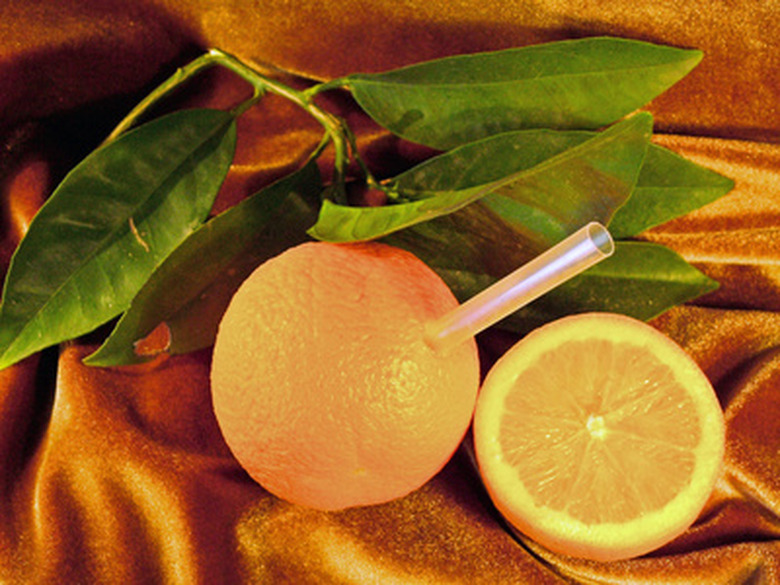Types Of Viable Orange Trees In Houston, Texas
Houston, Texas lies within USDA climate zone 9, where nighttime winter temperatures rarely drop below 45 degrees Fahrenheit. Low temperatures, like the record 9 degrees Fahrenheit in Dec. 1989, remain very rare. This is good news for gardeners and farmers who want to grow orange trees because they are hardy down to 25 degrees. Many varieties of orange trees exist and many are suited to living outdoors in the Houston area year-round.
Navel Oranges
The naval oranges are widely cultivated for their sweet, juicy flesh that contains no seeds. They are the perfect eating oranges and include varieties like dream naval, cara cara, red naval, Brazilian bahai navel, late navel, navelina and Washington navel.
Valencia Oranges
Valencia oranges are the juiciest of all the oranges and are cultivated for that purpose. Valencias have seeds, but are superior to other common orange varieties for the amount and quality of their juice. Rhode red is classified as a Valencia and yields even more juice than other Valencia oranges. In very high temperatures, such as the record 108 degrees Fahrenheit that occurred in Houston in Sept. 2000, Valencia oranges can become sunburned and their color can also be affected, but in general they are well suited to tropical environments.
- Houston, Texas lies within USDA climate zone 9, where nighttime winter temperatures rarely drop below 45 degrees Fahrenheit.
- In very high temperatures, such as the record 108 degrees Fahrenheit that occurred in Houston in Sept. 2000, Valencia oranges can become sunburned and their color can also be affected, but in general they are well suited to tropical environments.
Sour Oranges
Sour, or bitter, oranges are often grown in South America and southern Mediterranean areas. These less common oranges can also grow in the Houston area. Some, such as the bergamot orange, are inedible, but are valued for their oil, which is used to make perfume and specialty teas, such as Earl Grey. The peel is sometimes candied or made into marmalade. Other sour oranges include the African, Argentine, bigaradier apepu, bittersweet or daidai, chinotto, Seville, and the popular Tunis sour orange, whose peel is combined with dates, cinnamon and peanuts to make a sweet dish in Tunisia.
Blood Oranges
Blood oranges typically have red flesh. The Maltese blood orange is small but popular for use in dessert dishes that require a vibrant red color. Maltese oranges are slightly sour but very juicy. This orange is common in southern Spain and Malta and is gaining popularity as a crop in California.
- Sour, or bitter, oranges are often grown in South America and southern Mediterranean areas.
- The Maltese blood orange is small but popular for use in dessert dishes that require a vibrant red color.
Moro is the name of another blood orange. This orange is from Sicily, and its rind is dark burgundy in color. It is known as the "connoisseur's citrus."
Tangelos and Tangerines
Closely related to oranges are the tangelos and tangerines, which are also good choices for Houston gardens. The moro tarocco is a Mediterranean fruit, considered Italy's best orange. It resembles the minneola tangelo but tastes a bit like raspberries.
The mandarin oranges are some of the most frost tolerant members of the orange family. Satsuma mandarins were cultivated widely in southeastern Texas until the 1980s when a series of severe frosts put an end to the crop. Minneola tangelo is a good producing tangerine type of orange. Tangerine varieties include dancy, clementine, ponkan and fortune. Numerous hybrid varieties also exist.
- Moro is the name of another blood orange.
- The moro tarocco is a Mediterranean fruit, considered Italy's best orange.
